With 50% of people living in urban areas, it is more important than ever for cities to be sustainable. Many cities are already taking steps toward sustainability, including recycling programs, green initiatives, and implementing clean energy.
Sustainable cities have many advantages, including reduced energy consumption and savings for taxpayers. Many sustainable cities in the US have achieved this status by implementing energy-efficient measures and adhering to a green lifestyle. In this article, we look into cities that not only protect the environment but are also economically sound and are helping the US achieve its energy independence goals.

“A sustainable city should be the equivalent of a natural ecosystem, self-regenerating and capable of supporting its inhabitants indefinitely.”
– Helmut Jahn
What Is It Like to Live in a Sustainable City?
Sustainable cities in the us are as pleasant as it is practical. The various environmental benefits of sustainable cities include cleaner air, fewer emissions, and a healthier environment overall. Living in such a city also extends to the economy and social factors, as sustainable cities tend to have a lower cost of living and a higher quality of life.
“Sustainable development is the pathway to the future we want for all. It offers a framework to generate economic growth, achieve social justice, exercise environmental stewardship, and strengthen governance.”
– Ban Ki-moon
Living in a sustainable city can also positively impact your finances, as one study found that residents living in such cities can save up to $3,000 per year. That money can be invested in other things, such as education or retirement funds. But most importantly, money can be spent on yourself rather than wastefully polluting the environment.
Here’s what it’s like to live in a sustainable city:
Environment: Sustainable cities in the us are conscious of the environment and take steps to protect it. The city’s construction is eco-friendly, and the public transportation system is designed to encourage the use of public transport. Sustainable cities also promote waste recycling and use renewable energy sources like solar and wind power. All these measures help to make the city environment-friendly and sustainable.
“The real voyage of discovery consists not in seeking new landscapes, but in having new eyes.”
– Marcel Proust
Transportation: Affordable and easily accessible public transit systems are essential to any city working towards sustainability. The demand for efficient public transit systems is on the rise as more and more people realize how harmful pollution is to our health and planet.
With sustainable public transit, people won’t have to use their cars as much, thus cutting down on pollution and fuel consumption. In urban centers, public transit systems can help connect people to different neighborhoods and employment opportunities, thus improving a city’s overall quality of life.
Energy source: Living in a smart city means you do not have to worry about getting access to electricity and water. This is because the city will be powered by renewable energy sources like wind and solar energy.
Lifestyle & Policy: Sustainable cities in the US have policies such as using renewable energy, recycling resources, and using public transport. These policies encourage sustainable living among the people. Sustainable cities are argued to improve citizens’ quality of life and boost economic development.
Sustainable cities in the US are cities that are planned and constructed with consideration of the environmental impact and consequences while improving the citizen’s quality of life. They aim to reduce the effect of human activity on the ecosystem, including climate change, depletion of natural resources, pollution, and local ecosystem destruction.
Most Sustainable Cities in the US
1. San Diego, California
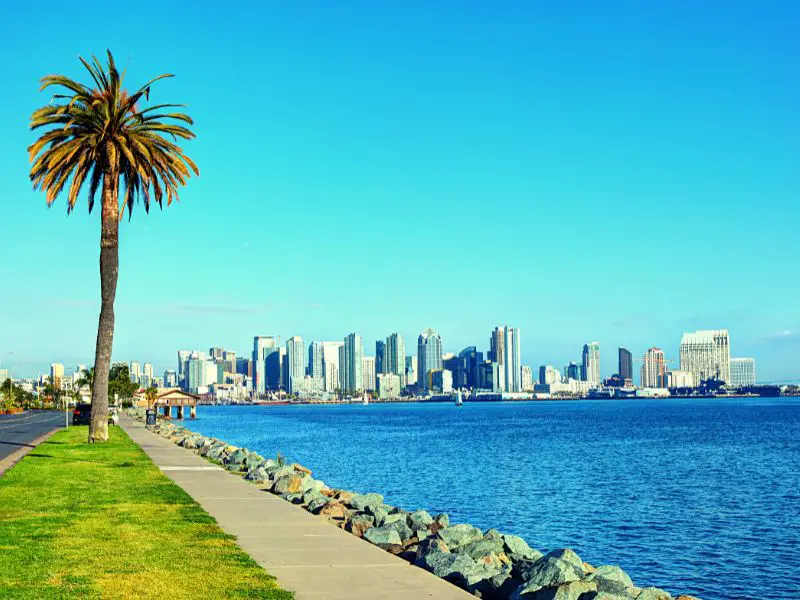
San Diego topped WalletHub’s ranking of greenest cities in 2018 with a score of 72.53. It also came as 2017’s runner-up, making it one of the most sustainable cities in the US.
San Diego’s green hotels received high marks on Travel & Leisure’s readers’ poll of eco-friendly towns for their dedication to recycling and energy-saving technology like aerating showerheads.
Environmental Policies
San Diego’s ambitious Zero Waste Plan aims to eliminate all waste generation by 2040.
By collecting green trash and food scraps from homeowners’ kitchens and streets, they have already redirected 75% toward their 2020 objectives.
San Diego was also the first big city in the United States to commit to 100% renewable energy sources.
2. Portland, Oregon
In 2015, Travel + Leisure magazine’s readers voted Portland the greenest city in the United States. The magazine polled its readers to determine which places were the most environmentally friendly in terms of amenities like public transportation and eateries that use locally sourced products.
Portland isn’t just hip; it’s also environmentally conscious, thanks to its abundance of secondhand stores and vegan food trucks.
Environmental Policies
Portland has a Climate Action Plan, a Climate Change Preparation Strategy, and an Environment and Justice Framework, all of which contribute to the city’s long-term goal of creating a thriving, connected, equitable, healthy, and resilient future.
In addition, they have set targets to reduce water use, eliminate dangerous pollutants, and bring energy consumption down to levels seen in 2006-2007 by 2030.
3. Seattle, Washington
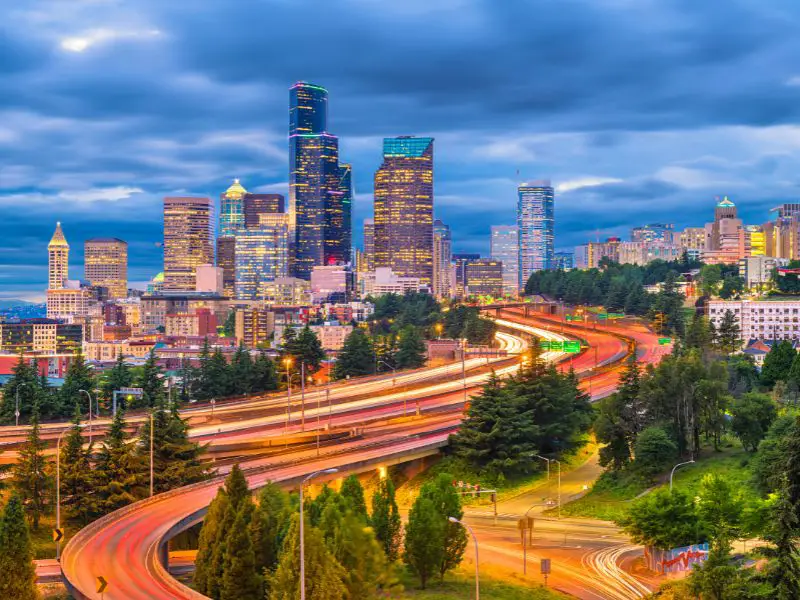
Seattle is renowned as the Emerald City not just because of its perpetually verdant climate but also because of the city’s vast environmental protection initiatives. Seattle City Light is the first utility in the United States to be completely carbon neutral guaranteeing Seattle’s seat as one of the most sustainable cities in the US.
Hydroelectric dams put the city in the top 2 percent of the United States for producing sustainable energy. Microsoft has established a goal of being carbon-negative by 2030, while Amazon has set a target of achieving net-zero carbon emissions by 2040.
Environmental Policies
In addition to bolstering thriving communities and ensuring social justice, Seattle’s Climate Action Plan (one of the first of its type in the US) prioritizes reductions in waste, increased use of renewable energy in buildings, and more efficient public transit.
Even though hydropower provides almost 90% of Seattle’s energy, the city hopes to reduce emissions by 58% by 2030 and ultimately become carbon neutral by 2050.
4. Honolulu, Hawaii
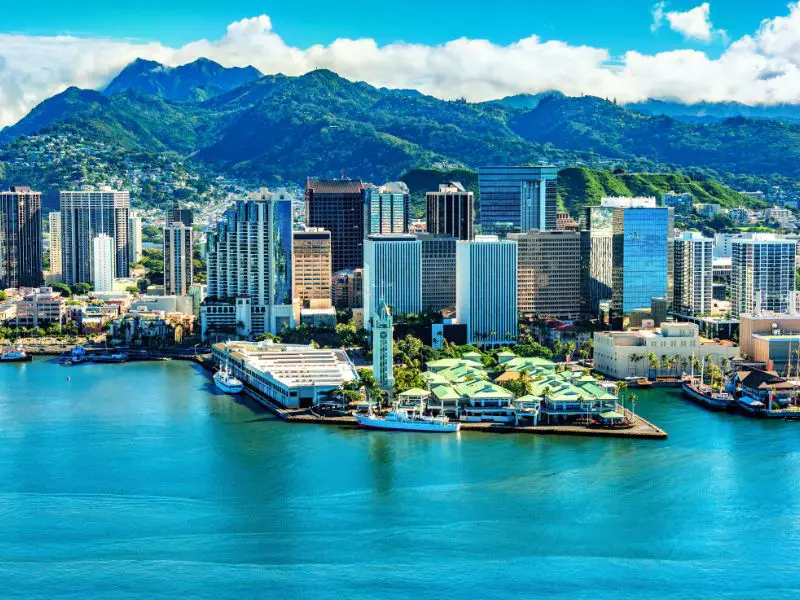
In 2014, the capital of Hawaii, Honolulu, was named one of the most sustainable cities in the US by The Daily Beast. The website relied on official statistics and studies by Experian Marketing Services, a market research organization that has followed the environmental progress of the United States for more than 50 years.
Environmental Policies
Hawaii’s The Resilience Strategy outlines 44 initiatives to reduce the effects of climate catastrophe, including providing access to renewable energy and encouraging food cultivation locally.
The island of Oahu will switch to renewable energy by 2025, which would cut the island’s greenhouse gas emissions by 45% and put the island on track to become carbon neutral by 2045.
5. Boston, Massachusetts
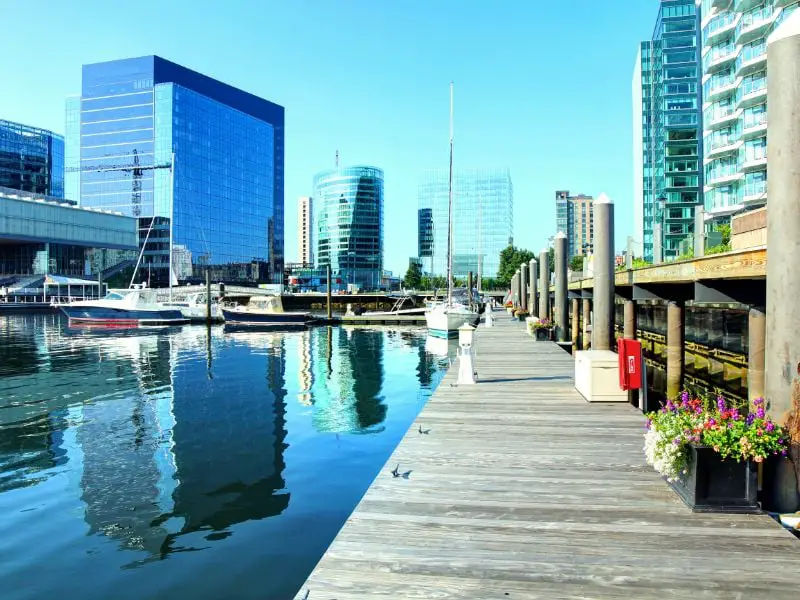
Boston, the oldest subway system in the United States, is also one of the most walkable and top sustainable cities in the US. According to Walk Score, Boston ranked third best in the top cities for pedestrians in 2017, behind only New York and San Francisco.
Environmental Policies
The Zero Waste Boston project intends to boost the city’s recycling rate from 25 percent to 80 percent by 2035 and 90 percent by 2050.
Boston often cited as one of the cleanest cities in the US regarding energy consumption, surpassed its 2020 carbon reduction target by 60% earlier than expected.
6. New York City, New York

Even though greenery might not be the first thing that comes to mind when you think of New York, the biggest city in the United States is pretty good for the environment.
On the Siemens Green City Index for the US and Canada, New York ranked third overall and first for land use and transportation.
Environmental Policies
The OneNYC plan calls for an 80% reduction in emissions by 2050 and the elimination of landfill garbage by 2030.
To become carbon neutral by 2050, the city intends to remodel public buildings with energy-efficient improvements, divest its pension funds from owners of fossil fuel reserves, and switch to 100% renewable power.
7. Minneapolis, Minnesota
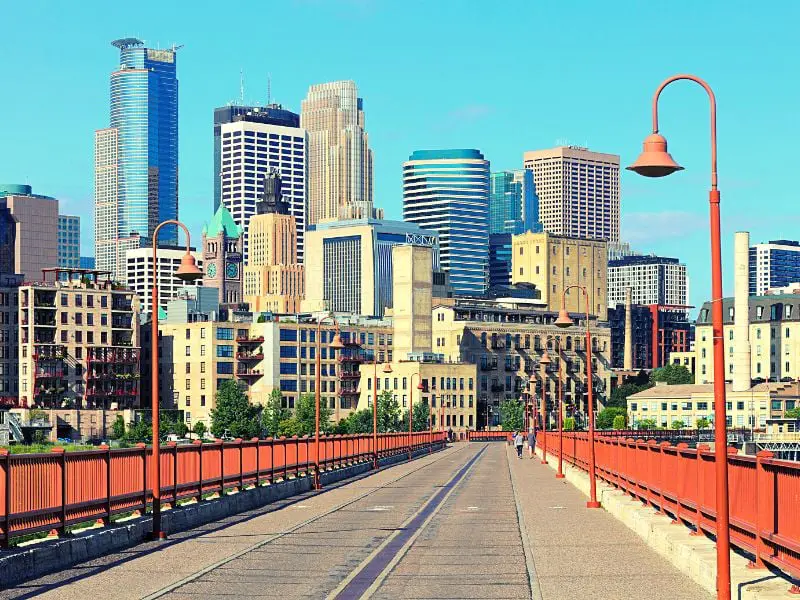
With 105,843 square feet of green spaces per person and about 14.9% of its area parks, Minneapolis is not just one of the most sustainable cities in the US but also ranks first for green space.
Previously named as one of the best in the United States in terms of parkland and green spaces, 95% of inhabitants can walk to a park within ten minutes or less.
Environmental policies
To name just a few of the many community-wide initiatives being taken to improve environmental quality, the city has enacted not just a Climate Action Plan but also a Sustainable Building Policy, a Pollinator Friendly Policy, a Community Garden Lease, an Urban Farm Policy, and so on.
Minneapolis aims to cut emissions by 30% by 2025 and 80% by 2050. The city is slowly moving away from fossil fuels, and by 2030, it wants to get all of its power from renewable sources.
8. Denver, Colorado
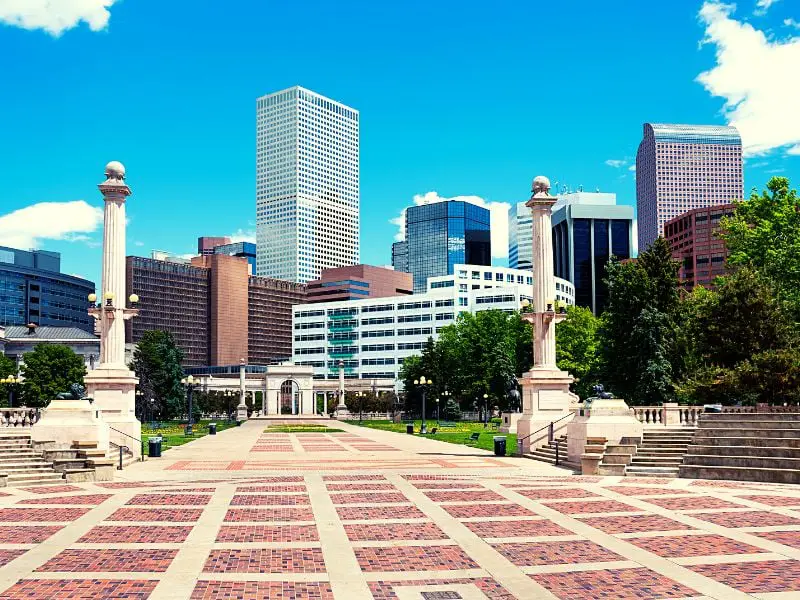
Siemens placed Denver in fifth place in its Green Cities Index. The Mile High City does its bit for the environment by giving brownfield cleaning projects a high priority and promoting the use of electric cars and other alternative fuel sources.
Environmental policies
The 80 x 50 Climate Action Plan is the city’s strategy to reduce greenhouse gas emissions by 80%. By 2030, the city of Denver has set a goal to get all of the community’s power needs from renewable sources.
Final Thoughts
Over the past several years, with environmental issues such as climate change and pollution becoming increasingly prevalent, cities have become more aware of the need for greater sustainability. As a result, many cities have implemented policies such as banning plastic bags and implementing stricter recycling standards.
Additionally, many sustainable cities in the US have also implemented programs that attempt to encourage residents to live more sustainable lifestyles. For example, many cities have implemented programs encouraging residents to plant trees or participate in neighborhood clean-ups, which help reduce air pollution while improving residents’ health.
While these measures are undoubtedly a step in the right direction, many Sustainable cities in the US still have much more ground to cover before they can claim to be genuinely sustainable.
Check out these sustainable products and practices: Sustainable Shoes, Sustainable Toothpaste, Sustainable Furniture Manufacturing Companies, Construction Materials That Are Environmentally Friendly



;?>/smartquizbuilder/includes/images/sqb-registration-img.jpg)



